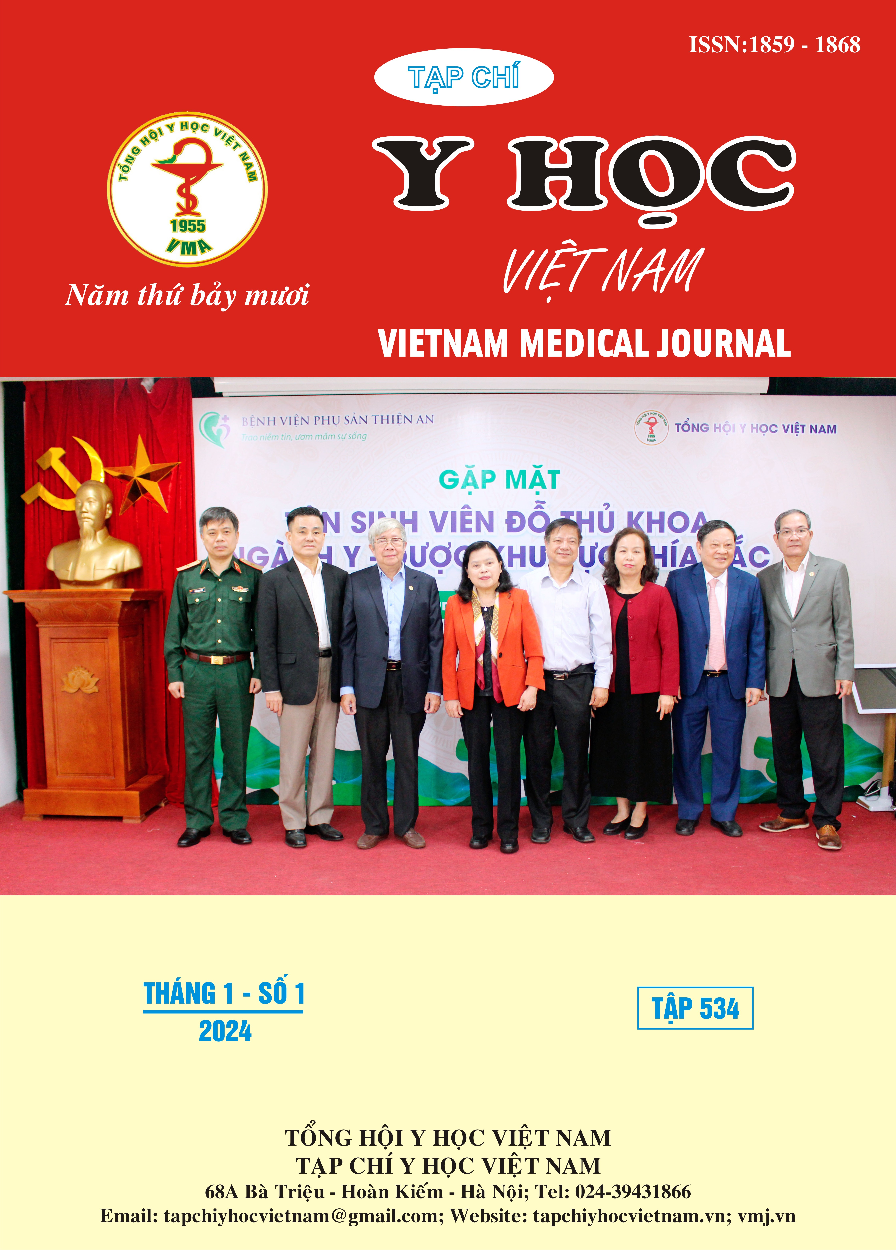HIỆU QUẢ ĐIỀU TRỊ VÀ KINH TẾ Y TẾ CỦA PHẪU THUẬT KÍCH THÍCH NÃO SÂU Ở BỆNH NHÂN PARKINSON TẠI VIỆT NAM
Nội dung chính của bài viết
Tóm tắt
Mở đầu: Kích thích não sâu (KTNS) đã được chứng minh là có hiệu quả lâm sàng và tiết kiệm chi phí trong điều trị bệnh Parkinson giai đoạn tiến triển. Tuy nhiên, hiệu quả điều trị này này ở bệnh nhân bệnh Parkinson giai đoạn tiến triển ở Việt Nam vẫn chưa được biết đến. Phương pháp: Đây là một nghiên cứu đoàn hệ tiến cứu. Hai nhóm bệnh Parkinson giai đoạn tiến triển được điều trị phẫu thuật KTNS và được điều trị nội khoa (ĐTNK) tối ưu được chọn vào nghiên cứu. Người tham gia được đánh giá thang MDS-UPDRS khi “tắt máy”/ “tắt thuốc” và khi “bật máy/tắt thuốc” đối với nhóm KTNS và khi “tắt thuốc” đối với nhóm ĐTNK. Bảng câu hỏi chất lượng sống của EQ-5D-5L, liều tương đương levodopa (LED) và chi phí điều trị (biến chứng phẫu thuật, thay pin, tái khám, chăm sóc sức khỏe liên quan, thuốc men và chi phí gián tiếp) cũng được ghi nhận ở hai nhóm. Các lợi ích về sức khỏe sau đó được đo lường bằng QALY (số năm sống được điều chỉnh theo chất lượng) hoặc theo điểm của các chỉ số lâm sàng. Tất cả dữ liệu được ghi lại ở lần khám ban đầu, sau 3 tháng và 6 tháng. Phương trình ước tính tổng quát (GEE) đã được sử dụng để ước tính hiệu quả giữa hai liệu pháp. Kết quả: Tổng cộng có 73 người tham gia, trong đó có 36 người thuộc nhóm KTNS và 37 người thuộc nhóm ĐTNK. Độ tuổi trung bình tại thời điểm nghiên cứu là 63,1 ± 9,6 ở nhóm KTNS so với 58,2 ± 8,7 ở nhóm ĐTNK (p=0,027). Thời gian mắc bệnh ở nhóm KTNS là 14,0 ± 5,2 năm so với 9,7 ± 5,4 năm ở nhóm ĐTNK (p=0,001). Trong phân tích hiệu quả lâm sàng, MDS-UPDRS-III là 42,2 ± 14,2 ở nhóm KTNS khi “bật máy/tắt thuốc” so với 64,6 ± 18,2 ở nhóm KTNS khi “tắt máy/tắt thuốc” (p<0,001) và so với 41,4 ± 11,0 ở nhóm ĐTNK khi “tắt thuốc” (p=0,785). LED giảm đáng kể ở nhóm KTNS so với nhóm ĐTNK (514,6 ± 322,7 so với 1218,9 ± 402,3, p<0,01). Trong phân tích hiệu quả chi phí, so với nhóm ĐTNK, nhóm KTNS có hiệu quả chi phí tốt hơn trong tương quan với MDS-UPDRS-IV với tỉ số hiệu quả chi phí tăng thêm tuần tự là 1,45, 1,47, 1,56 điểm ở mỗi lần thăm khám 3 tháng (p< 0,05). Kết luận: KTNS cải thiện đáng kể các triệu chứng vận động và KTNS có thể có hiệu quả về mặt chi phí ở bệnh nhân Parkinson giai đoạn tiến triển ở Việt Nam.
Chi tiết bài viết
Tài liệu tham khảo
2. Fox, S.H., et al., International Parkinson and movement disorder society evidence-based medicine review: Update on treatments for the motor symptoms of Parkinson's disease. Mov Disord, 2018. 33(8): p. 1248-1266.
3. Deuschl, G., et al., A Randomized Trial of Deep-Brain Stimulation for Parkinson's Disease. New England Journal of Medicine, 2006. 355(9): p. 896-908.
4. Nunta-Aree, S., et al., SW2-year outcomes of subthalamic deep brain stimulation for idiopathic Parkinson's disease. J Med Assoc Thai, 2010. 93(5): p. 529-40.
5. Dams, J., et al., Cost-effectiveness of deep brain stimulation in patients with Parkinson's disease. Mov Disord, 2013. 28(6): p. 763-71.
6. Krack P, et al. Five-year follow-up of bilateral stimulation of the subthalamic nucleus in advanced Parkinson's disease. N Engl J Med. 2003 Nov 13;349(20):1925-34.
7. Merola A., Zibetti M., Angrisano S., al. et (2011), "Parkinson's disease progression at 30 years: a study of subthalamic deep brain-stimulated patients". Brain, 134 (Pt 7), pp. 2074-84.
8. Moro E., Lozano A. M., Pollak P., al. et (2010), "Long-term results of a multicenter study on subthalamic and pallidal stimulation in Parkinson's disease". Mov Disord, 25 (5), pp. 578-86.


